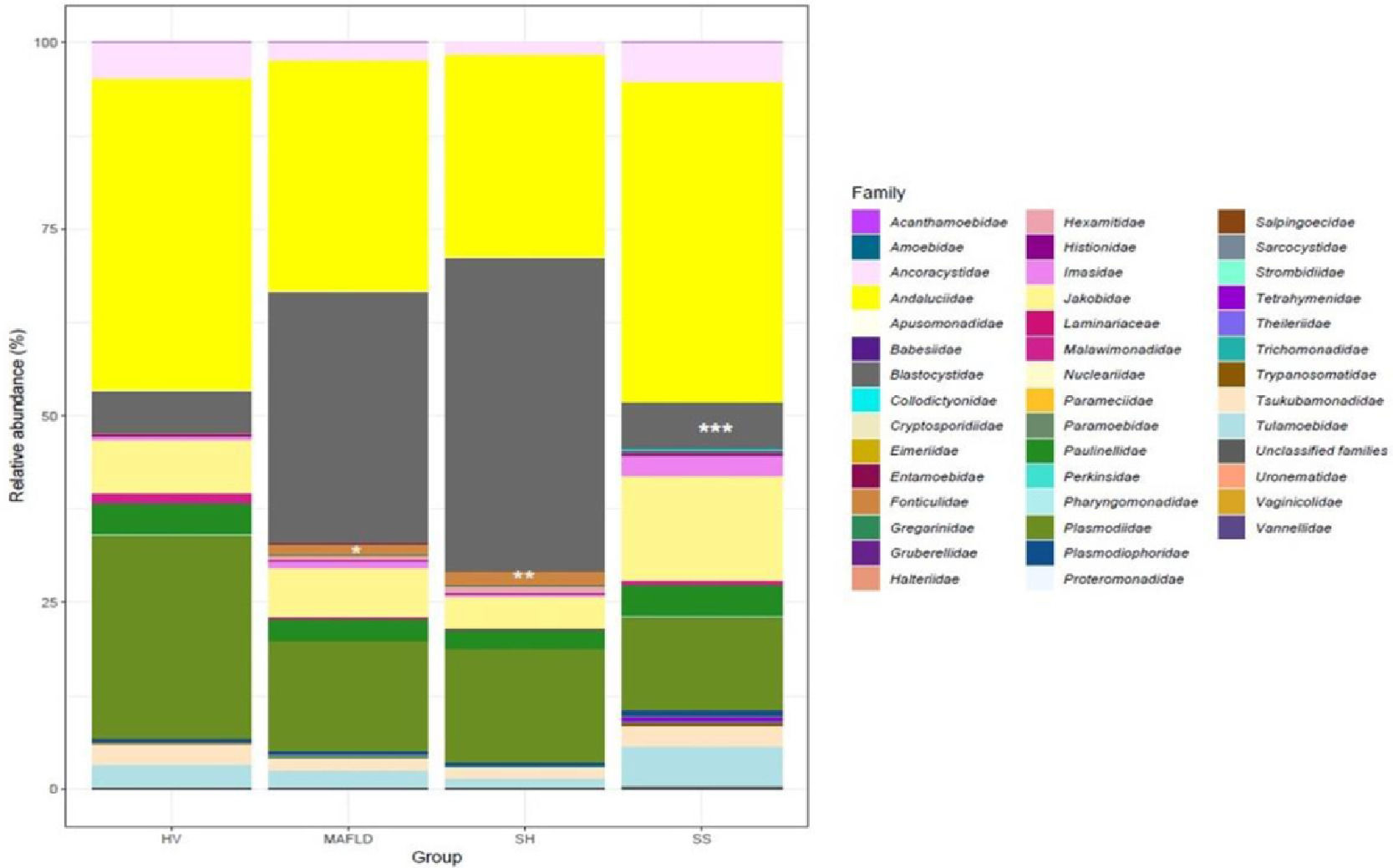
Abstracts of the 2022 Annual Meeting of the ALEH
More infoFungi, archaea and protozoa are the least known members of the gut microbiome, but they could represent a niche for biomarkers discovery to risk-stratify MAFLD patients. This study aimed to identify gut metatranscriptomic signatures in MAFLD patients from Argentina.
Materials and MethodsStool samples, diet, demographic and clinical data were obtained from 33 biopsy-proven MAFLD patients (12 simple steatosis (SS) / 21 steatohepatitis (SH)) and 19 healthy volunteers (HV). PNPLA3 rs738409 SNP was genotyped. RNA-seq was performed in NovaSeq6000®. Data were analyzed with Maaslin2-v1.2.0, bioBakery-v1.8 and DESeq2-v4.1.
ResultsBMI was higher among MAFLD patients than in HV (q=4.49 × 10−6). The risk GG genotype of PNPLA3-SNP was more prevalent among SH (q=0.0198). In MAFLD patients and in subjects with the GG genotype, differentially expressed genes (DEGs) of fungi, such as Fusarium proliferatum and Candida sorbophila, were up-regulated (q<0.01). After comparing transcript abundance, Saccharomucetaceae was the most active family among MAFLD patients, whereas Aspergillaceae family prevailed in HV. DEGs of methanogenic archaea and protozoa, such as Fonticula alba and Blastocystis spp., were highly expressed in MAFLD and SH after comparing them to HV and SS groups, respectively. The analysis of the functionally active protozoan families revealed that the Blastocystidae and Fonticulidae families were more functionally abundant in MAFLD and SH groups after comparing to HV and SS, respectively (Figure exhibits the statistically significant differences between groups). In subjects with the GG genotype, DEGs of Fonticula alba were up-regulated and those of Blastocystis spp. were less expressed after comparing to those with CC/CG genotypes. In SH, functional profiling of archaeal and fungal DEGs revealed an over-representation of viral capsid assembly and phage shock processes, whereas copper metabolism, peptidoglycan turnover and non-autophagic vacuolization were enriched by protozoan DEGs.
ConclusionsThe switch in microbiome signatures characteristic of MAFLD onset and progression is achieved through the activity of several community members.











